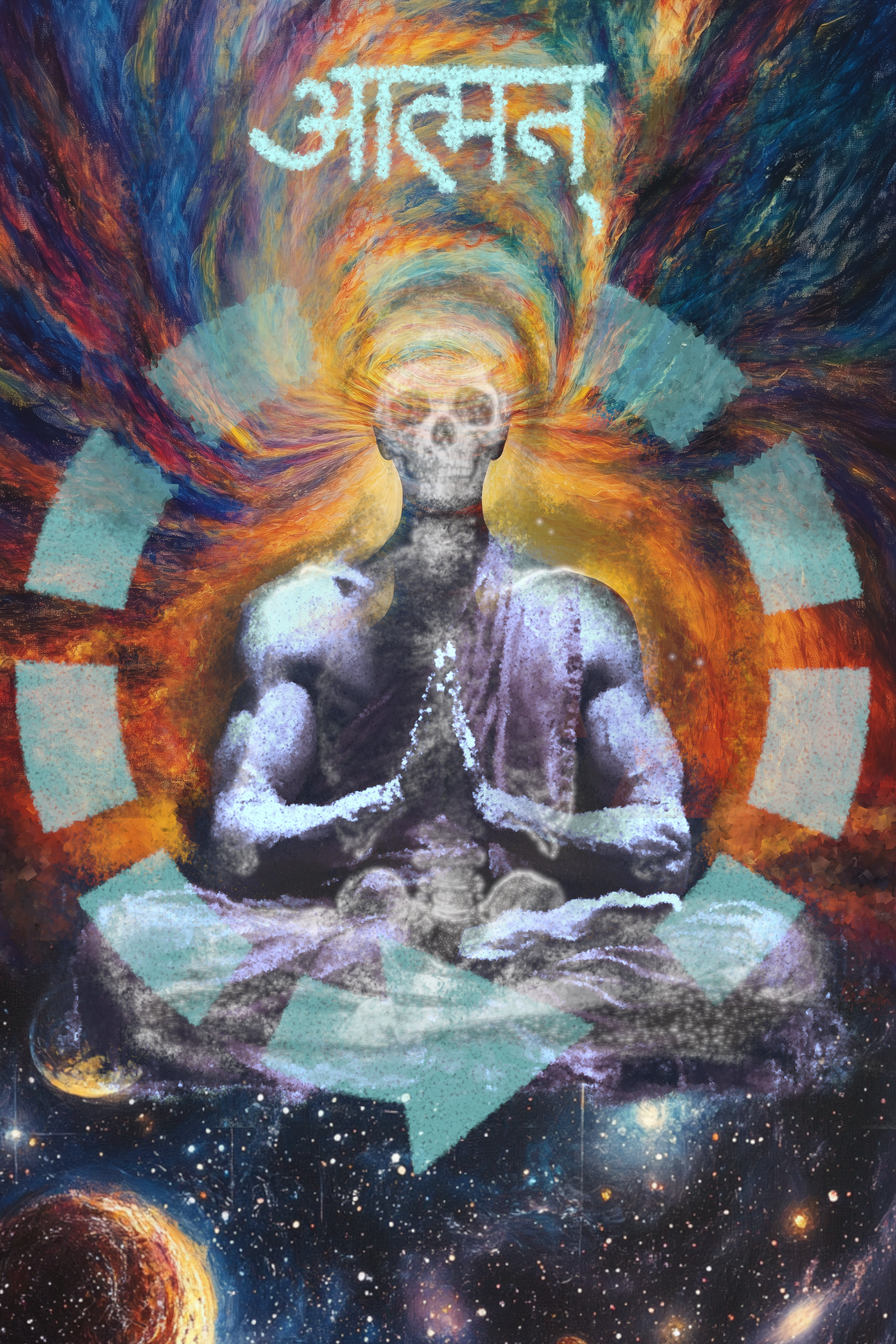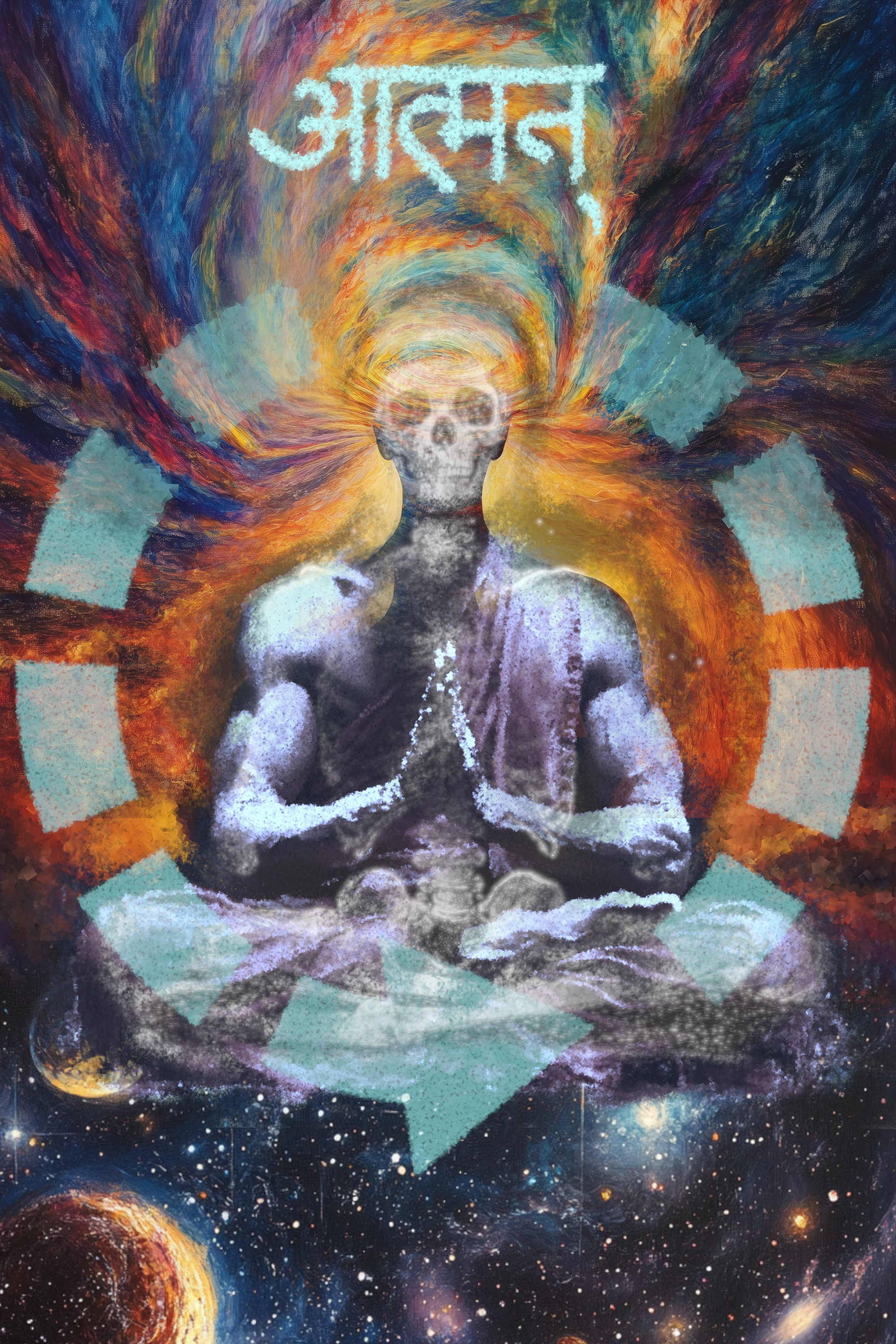Atman
Gallery | Links:

The Vedic texts, particularly the Upanishads, portray the Atman as the eternal, unchanging, and indestructible essence of every living being. It is distinct from the body, mind, and senses, often described as the “seer” behind all experiences. While the external world is transient and subject to decay, the Atman is permanent, unaffected by time or external conditions.
For instance, the Brihadaranyaka Upanishad declares, “Ayam Atma Brahma” (“This Atman is Brahman”), asserting that the essence of the self is identical to the universal consciousness. Similarly, the Chandogya Upanishad proclaims the famous dictum “Tat Tvam Asi” (“Thou art That”), inviting individuals to recognize their unity with the infinite.
Advaita Vedanta, meaning “non-dualistic end of the Vedas,” offers a radical perspective on the Atman. According to this school, the Atman is not merely a part of existence; it is existence itself. Adi Shankaracharya, one of the most influential exponents of Advaita, elaborates that the Atman is identical to Brahman, the ultimate, unchanging reality that underlies all phenomena.
Key Principles of Advaita Vedanta’s View on Atman
Non-Duality: The central tenet of Advaita is that there is no fundamental separation between the individual self (Atman) and the universal reality (Brahman). The apparent differences we perceive between individuals and the external world are the result of Maya (illusion).
The Illusion of Separateness: The world of multiplicity—where beings perceive themselves as distinct entities—is seen as a projection of ignorance (Avidya). This ignorance causes individuals to mistakenly identify with their body, mind, and ego, obscuring the true nature of the Atman.
Self-Realization: Liberation (Moksha) in Advaita is achieved through the direct realization that one’s true self (Atman) is none other than Brahman. This state transcends dualities such as subject and object, self and other, and existence and non-existence.
Satchitananda: The nature of the Atman, and thus Brahman, is described as Sat (pure existence), Chit (pure consciousness), and Ananda (pure bliss). This triad captures the essence of ultimate reality, beyond all conceptualization.

